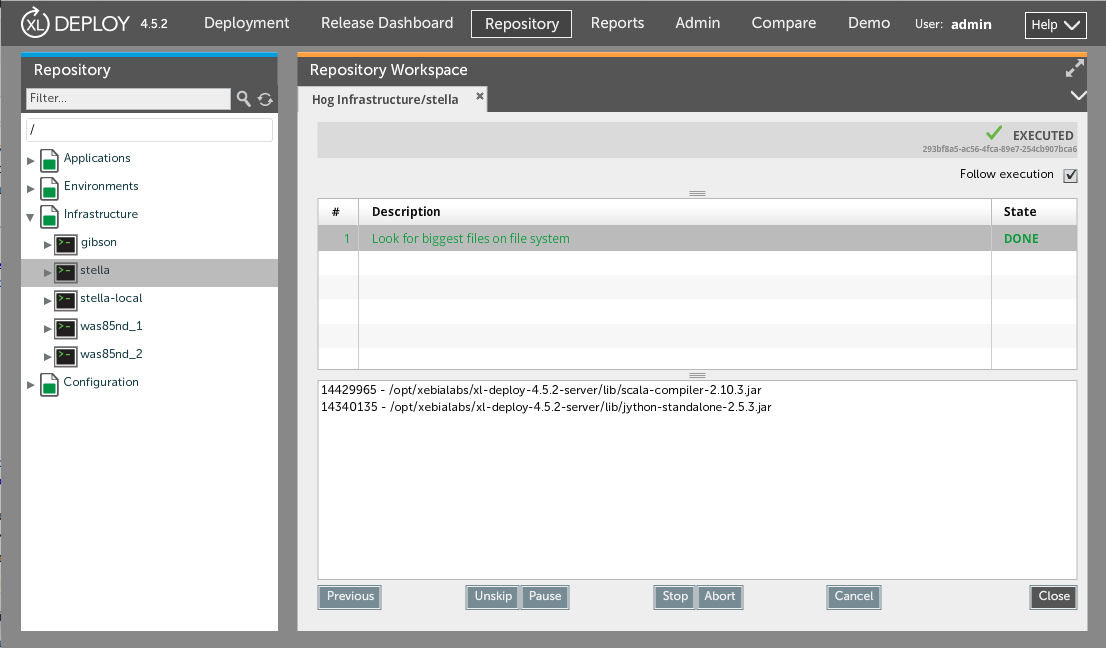

This option is only available for use with the -setup option, and it is only supported when XL Deploy is using a filesystem repository.
#Xl deployit password#
If you do not specify the password and the keystore requires one, XL Deploy will prompt you for it. Alternatively, you can specify the password in the nf file with the key. Specifies the password that XL Deploy should use to access the repository keystore. This option is supported in XL Deploy 4.5.x and later.Īttempts to recover a corrupted repository. They are: Optionįorces the execution of upgrades at XL Deploy startup. Start the server with the -help flag to see the options it supports. XL Deploy will encrypt the password when you start the server.

Alternatively, you can store the password in the XL_DEPLOY_SERVER_HOME/conf/nf file as follows: For example, the server should not require a password for the encryption key that protects passwords in the repository. Important: If you have installed XL Deploy as a service, you must ensure that the XL Deploy server is configured so that it can start without user interaction.

Developers/DevOps engineers can choose the components they want to deploy and manage configurations. So from the above, we can see it’s really handy to work with XL Deploy. Then, we have a component that needs to be deployed in two servers with different configurations. These scenarios can also be handled very well in XLDeploy. So, we deployed only that one component, leaving the other components untouched. We provided a hotfix recently with a few changes in only one component. Our application has 5 components in one of the deployable packages. We can choose individual components to deploy. What I really liked about this tool is the selective deployment. The ease of individual component deployment The XL Deploy plugin task in the VSTS build: We can deploy it from the build pipeline or we can login to the XLD application and deploy it manually. So once the XL Deploy plugin task is enabled in the VSTS build.
#Xl deployit manual#
Deploy using build pipeline or manual deploy This DAR package will be available in XL Deploy web application. So, at the end of all these tasks the XL Deploy plugin creates a DAR package. There is a XLDeploy plugin task which can be added after all the other tasks (like MS Build, copying artifacts, running test assemblies). Since XLD requires a VSTS build for creating the deployment package, we need to create a VSTS build of the application. We can export the manifest file as shown below from the package in XLD: Manifest file with one of the component tag: Or, we can create the manifest file manually and then the DAR package will be created according to the manifest file definition. We can create the deployable package (DAR) first and then export the manifest file. The manifest file is an XML file that describes the contents of the package for deployment. Keys and values in the above config file:

But the added advantage here is we can define our own delimiters for the keys. This is very similar to any other release automation tools. So for XL Deploy, we create the keys in a XL config file and give the values in the Dictionary in the XLD web application. Create XL configurationīefore any of the steps, we need to add the configurable items in the form of keys and values. Lets see what steps you need to take to start off with XL Deploy.
#Xl deployit windows#
Just connect to Windows or Unix target system and use this application with ease. It is a web based tool which means that it is accessible from any machine. Currently, we have migrated all of our components to VSTS build and XL Deploy.
#Xl deployit how to#
In this blog, I will tell you how to start with XLD and talk about my opinion.īefore, we were using XAML builds along with a Release Management (RM) tool which was installed on the Build Agent machine. So, the time has come to pen down my experience with XL Deploy


 0 kommentar(er)
0 kommentar(er)
